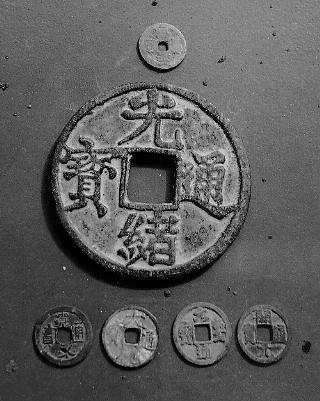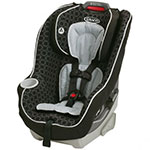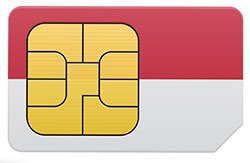Many Legal Tender in Bali Island
14 March 2014The Balinese se money under the name of artha (wealth), as one of the four recognized goals of Balinese life, together with pleasure (kama), virtue (dharma), and moksa (liberation). Thus, one should, indeed, strive for money, as well as for pleasure, but always within the limits of property. Wealth does not take you beyond the cemetery, goes the saying.
But which money? The Balinese know the rupiah, of course, and even the "gold card", but this is just the beginning, as there are many other types of "money" in Bali, often of a strange type, as we shall see here.

The traditional from of Balinese money is the kepeng, also called pis bolong. The word pis must be a shortened version of rupies, the legal tender of Indianized countries for centuries, while bolong, meaning hallow, denotes its peculiar shape, which is round and flat with a hole in the center. The Kepeng is of Chinese origin, though, as apparent from the characters that show on the face of the coin. Mads Lange, a famous Danish trader adventurer that operated from Kuta in the middle of the last century, is said to have imported large numbers of Chinese coins. But it is true that the coins had been minted in the Dutch had the monopoly of the copper trade, while they entrusted its minting to local Chinese. The kepeng has not been used as a legal tender in Bali since the colonization (1906). But the coin still has its value and continues to be traded, at the current rate of 1000 rupiah for one kepeng. For which purpose decidedly? Religious as is everything else in Bali. The kepeng is said to embody the panca dathu, the five material elements of the world, corresponding to the five gods and other components of the Balinese compass rose. As panca dathu, the kepeng is used for a whole range of Balinese offerings.
Before people set up to build a structure, they fill the hole with the five elements of the panca dathu - called here the Pedagingan or content. When it is completed, they "bring it to life" (uripanga), a ceremony that gives autonomous life to the building, which will then have to get its share of offerings. The canang, a small square leaf basket, one of the most common Balinese offerings, is incomplete until there is a kepeng on top of it, which is said to make up the essence of the offering (sari). This kepeng, the symbol of the five material elements, is placed on top of 5 types of flowers and herbs, symbol of the five main gods of the cosmos, the Panca Dewata, namely: Brahma, Wisnu, Iswara, Mahadewa and Siwa. Thus the kepeng and the flowers symbolize the spiritual and material components of the world.
When holy tirta water is prepared, one-finds again the kepeng for a similar function as a string of coins circles the neck of the water jug.
The kepeng is also used as a talisman. It is clasped around the arms of young babies so that their soul remains firmly within their body and is not "taken away" by evil influences; the kepeng coins are also scattered on the way to the cremation ground both to ward off evil influences; and as a symbol that "wealth can be taken no farther than the cremation ground, while ones karma accompanies the soul the world beyond the world."
There is another use of the kepeng during the cremation ritual: the coins are made into an effigy of the dead, a symbol of its physical components. This effigy is sewn into a white sheet by the relatives of the dead. There are several types of these ukur effigies. The most common replaces the actual body throughout the procession from the house of the dead to the cremation ground. When the body is exhumed, the ukur is put on top of it before it is burned.
The monetary function of the kepeng sometimes blends with its symbolic one. When people visit a priest or a Balinese healer, they usually put some kepeng coins on top of the "notification" offering, the pejati, which is handed to them. This is not a payment sense, as the amount depends on the goodwill of the person, but rather a contribution. Nowadays, people substitute banknotes for the kepeng.
Bali Cheap Car Quote
Why choose Bali Rent Car.net as your car rental partner in Bali?
- Wide range of car rental fleet with good maintenance.
- Easy booking and fast respond
- Free car delivery and collection in area of Denpasar Airport, Kuta, Sanur, Legian, Seminyak, Nusa Dua, Canggu.
- Cheap price with good services
- Has more than 12 years of experience in the tourism transportation business.
Further detail information, please feel free to contact Bali Rent Car.net via WhatsApp for faster respond.



















